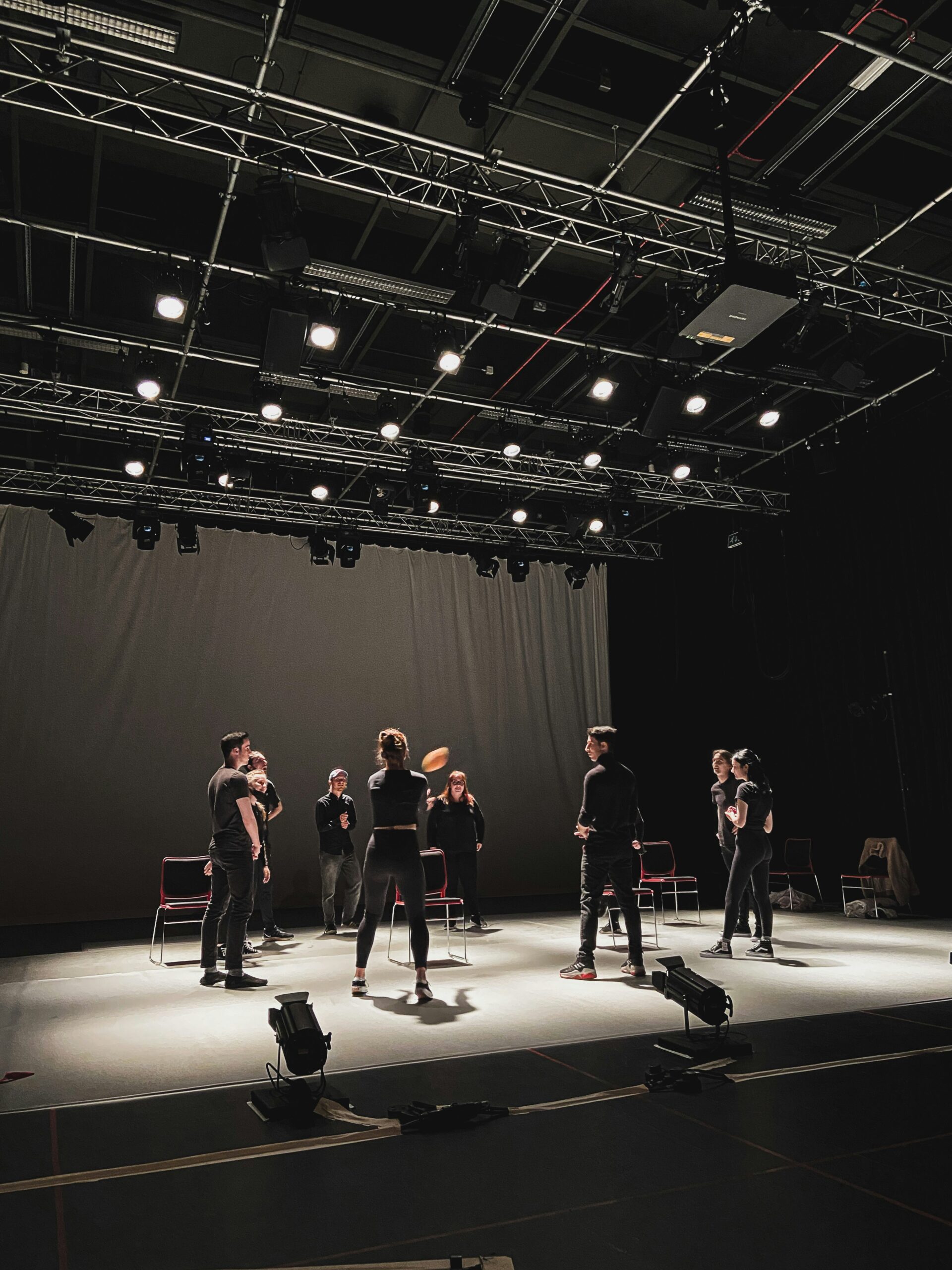Introduction
As dance coaches, we understand the intricate process of choreographing a captivating dance routine. It’s a labor of love that demands attention to detail, creativity, and, above all, a keen sense of direction. Often overlooked, the direction in choreography plays a pivotal role in shaping the overall performance. In this comprehensive guide, we’ll delve into the secrets of utilizing ballet and theatre terminology to enhance choreographic direction, allowing you to breathe new life into your routines effortlessly.
Ballet: Navigating the Dance Space with Grace
In the realm of ballet, precision and elegance reign supreme. Ballet terminology offers a rich vocabulary to articulate the nuances of direction within a dance piece. Let’s explore some key terms that can elevate your choreographic prowess:
- En Face: Directly facing the audience, this position ensures maximum visibility and connection with the spectators. Utilize en face orientation strategically to draw focus to pivotal moments in the choreography, enhancing dramatic impact.
- Croisé: This term refers to positioning the body at an angle to the audience, with one leg forward and the other back. Croisé adds depth and dimension to movements, creating visually captivating compositions on stage.
- Effacé: In this position, the dancer’s body is turned slightly away from the audience, with one shoulder forward and one back. Effacé imbues choreography with a sense of dynamism, as movements unfold with fluidity and grace.
- À la Seconde: Translated as “to the second,” this direction involves movement to the side, away from the audience. À la seconde steps can showcase technical prowess and agility, allowing dancers to explore the full extent of the stage space.
- Arabesque: A quintessential balletic pose, the arabesque involves extending one leg behind the body while maintaining an upright posture. Incorporating arabesques into choreography adds an element of poise and elegance, capturing the audience’s imagination with its ethereal beauty.
Theatre: Crafting Compelling Narratives through Spatial Dynamics
In the realm of theatre, direction transcends mere physical orientation, serving as a tool for storytelling and emotional expression. Theatre terminology offers a diverse array of cues to manipulate spatial dynamics and imbue choreography with depth and meaning:
- Upstage: Referring to the area farthest from the audience, upstage positioning can create a sense of distance or separation within the narrative. Use upstage movements to convey introspection or isolation, drawing the audience into the character’s inner world.
- Downstage: Conversely, downstage placement brings performers closer to the audience, fostering intimacy and immediacy. Downstage movements are ideal for moments of revelation or connection, allowing dancers to establish rapport with spectators.
- Stage Left/Stage Right: These directional cues orient performers relative to the audience’s perspective. Stage left often conveys vulnerability or uncertainty, while stage right evokes confidence and assertion. Leverage stage directions to delineate character dynamics and enhance dramatic tension.
- Center Stage: The focal point of the performance space, center stage commands attention and significance. Choreograph pivotal moments at center stage to underscore their importance, guiding the audience’s focus and reinforcing thematic motifs.
- Diagonal: A diagonal pathway traversing the stage can symbolize progression or transition within the narrative. Incorporate diagonal movements to signify character development or thematic evolution, infusing choreography with depth and complexity.
Adding Variety: Elevating Choreography through Dynamic Facings
In the quest for captivating choreography, variety is key to engaging audiences and maintaining interest throughout a performance. One effective strategy for injecting diversity into dance routines is through the manipulation of facings, whereby performers adjust their orientation within the performance space. By strategically incorporating changes in facings during the cleaning process, dance coaches can effortlessly infuse their choreography with dynamism and freshness. Let’s explore some innovative ways to play with facings and create compelling variety in dance routines:
- Diagonal Facings: Begin by organizing performers into groups, each facing a different diagonal angle on stage. This initial configuration sets the stage for fluid transitions and dynamic movement patterns. As the routine unfolds, orchestrate seamless transitions between diagonals, guiding performers through a series of directional shifts that add intrigue and visual interest to the choreography.
- Group Contrasts: Experiment with juxtaposing groups of performers with contrasting facings within the same scene or sequence. For example, one group may be facing forward while another group faces diagonally, creating a striking visual contrast that draws the audience’s eye and highlights the interplay between different elements of the choreography. By strategically alternating between contrasting facings, dance coaches can enhance the depth and complexity of their routines, fostering a sense of rhythm and tension that propels the narrative forward.
- Dynamic Turns: Integrate dynamic turns and rotations into the choreographic framework to facilitate seamless transitions between facings. Whether executing pirouettes, fouettés, or simple pivots, encourage performers to utilize turning movements as a means of fluidly transitioning between different orientations on stage. By incorporating turns into the cleaning process, dance coaches can refine timing, spacing, and coordination while introducing an element of spontaneity and excitement to the routine.
- Facings as Narrative Devices: Explore the expressive potential of facings as narrative devices that convey emotion, intention, and character dynamics. Experiment with subtle shifts in facings to signify changes in mood, perspective, or interpersonal relationships within the narrative framework. By imbuing facings with thematic significance, dance coaches can elevate choreography beyond mere movement, inviting audiences to connect with the underlying story and themes on a deeper level.
Incorporating dynamic facings into the cleaning process offers a practical and efficient means of introducing variety and complexity into dance routines without resorting to extensive reworking or restructuring. By encouraging performers to embrace the versatility of facings and explore the creative possibilities they afford, dance coaches can unlock new dimensions of artistic expression and captivate audiences with choreography that dazzles, delights, and resonates long after the final curtain falls. So, embrace the transformative power of facings, and watch as your choreography comes to life with newfound vitality and vibrancy on stage.

